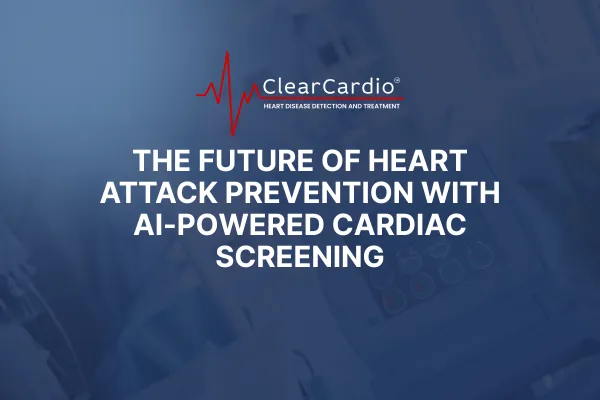
The Future of Heart Disease Detection - From Harvard to AI Revolution
Dr. John Osborne | ClearCardio
In this captivating episode, Dr. John Osborne takes us on his extraordinary journey from Air Force brat to Harvard-trained cardiovascular pioneer. Growing up in Saigon during the Vietnam War, surviving two brain surgeries during his PhD, and training at the world-renowned Brigham and Women's Hospital, Dr. Osborne's path led him to a revolutionary discovery: traditional stress tests are failing patients with dangerous 25-40% false negative rates for severe blockages.
Dr. Osborne reveals his groundbreaking "lumpy bumpy" revelation at Harvard that changed everything - realizing cardiologists were telling patients with early plaque "you're fine" and sending them away to "marinate" until they needed emergency interventions. This led to his pioneering work with AI-powered cardiac CT that can detect over 2,000 shades of gray compared to the human eye's 50, quantifying plaque down to a tenth of a cubic millimeter (the size of a period). Learn his 5-step formula for eliminating heart disease and why he wants to put himself out of business by 2040.
"The future is already here. It's just not equally distributed. We are not going to eliminate heart disease via stress tests, EKGs, heart caths because we've been doing that for over fifty years. And by far, heart disease is still the leading cause of death. Those are not working." — Dr. John Osborne
Key Takeaways from This Episode:
Dr. Osborne started medical school at age 19 through a unique Penn State-Jefferson Medical College accelerated program (only 30 students nationwide)
He survived two brain tumor surgeries during his PhD program but refused to let it derail his 15-year journey to becoming a cardiologist
The "lumpy bumpy" discovery at Harvard's Brigham and Women's Hospital revealed cardiologists were missing early disease and telling patients to wait until they needed emergency procedures
Stress tests require 70% blockages before detection and have 25-40% false negative rates for severe disease - making them dangerously unreliable
Plaque always starts in the vessel wall (the "donut") and can grow outward for decades while the channel remains completely normal
Dr. Osborne performed his last heart catheterization in 2005, replacing invasive $20,000 procedures with safer, more accurate cardiac CT for 5% of the cost
AI can analyze millions of pixels across 2,000 shades of gray compared to human vision's 50 shades, detecting plaque invisible to cardiologists
75% of people will develop heart disease in their lifetime, with 40% dying from it - making detection at age 40+ critical
Dietary cholesterol has "almost nothing to do" with blood cholesterol levels and is "not a nutrient of interest" according to guidelines
Resistant starch created by cooling cooked pasta/rice overnight changes starch chemistry to act like fiber instead of sugar
Nicotine from any source (smoking, vaping, pouches) turns blood vessels from "Teflon into Velcro" regardless of delivery method
Dr. Osborne's ultimate goal: eliminate preventable heart disease by 2040 and put interventional cardiologists out of business
Resources Mentioned:
Penn State-Jefferson Medical College Combined Program - Accelerated undergraduate/medical school pathway
Brigham and Women's Hospital (Mass General Brigham) - Harvard's premier cardiology training center
640-Slice Cardiac CT Scanner - First installation in North America for ultra-high resolution imaging
ClearCardio AI Analysis Platform - Proprietary technology for quantifying plaque to 0.1 cubic millimeters
Texas Heart Attack Prevention Law (2009) - Landmark legislation requiring calcium score coverage
Mediterranean Diet - Evidence-based nutritional approach for cardiovascular health
Resistant Starch Research - New science on cooling starches to change molecular structure
